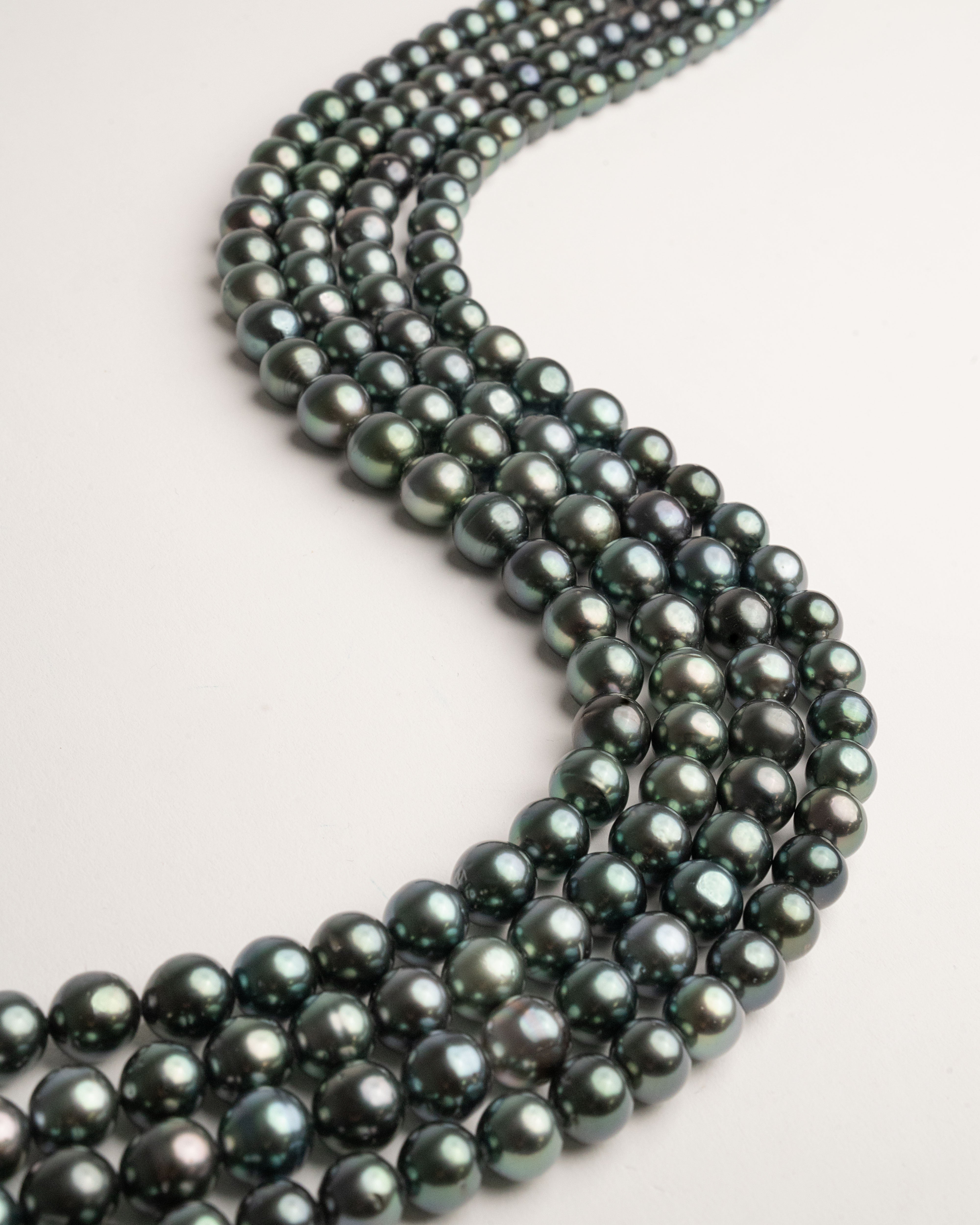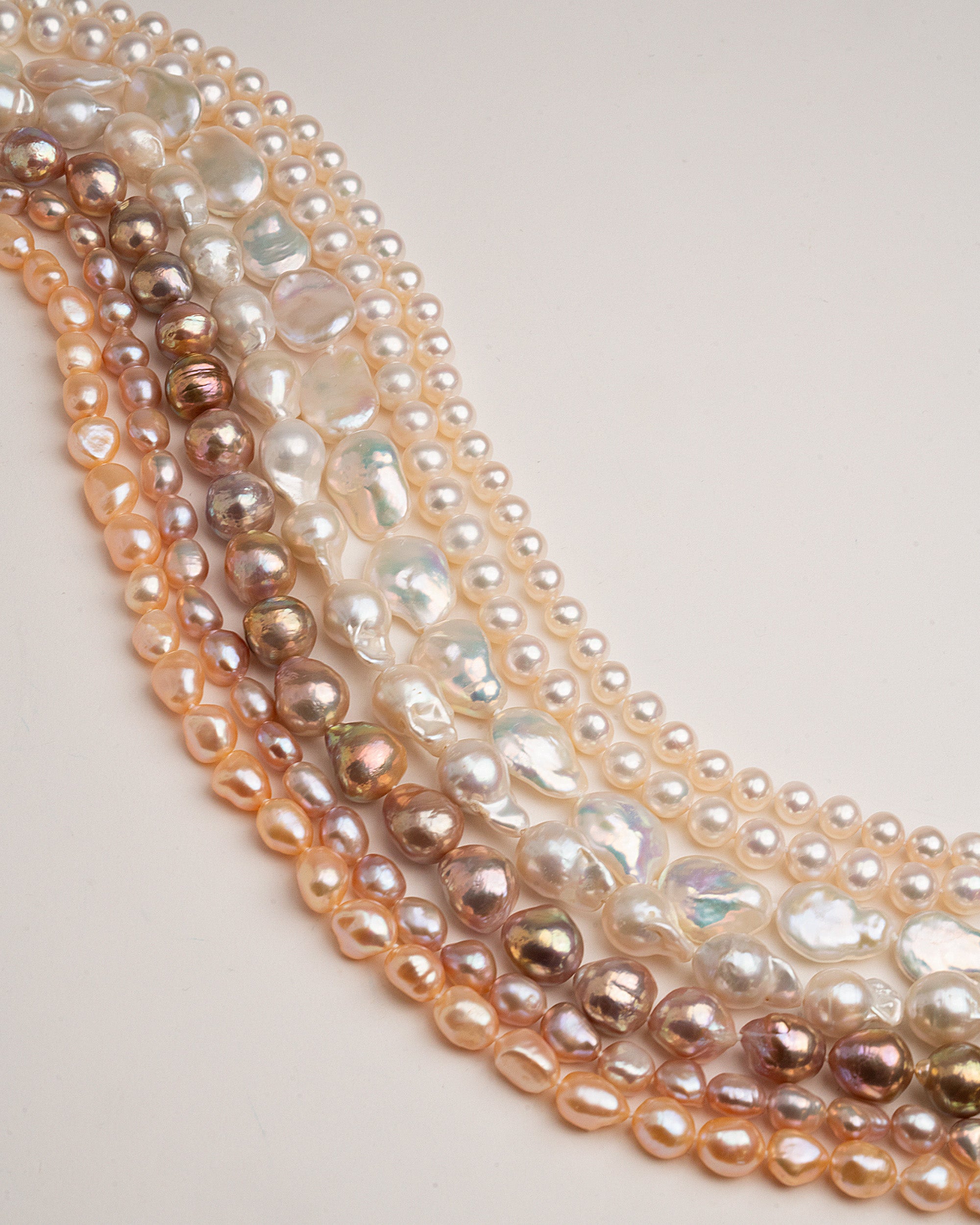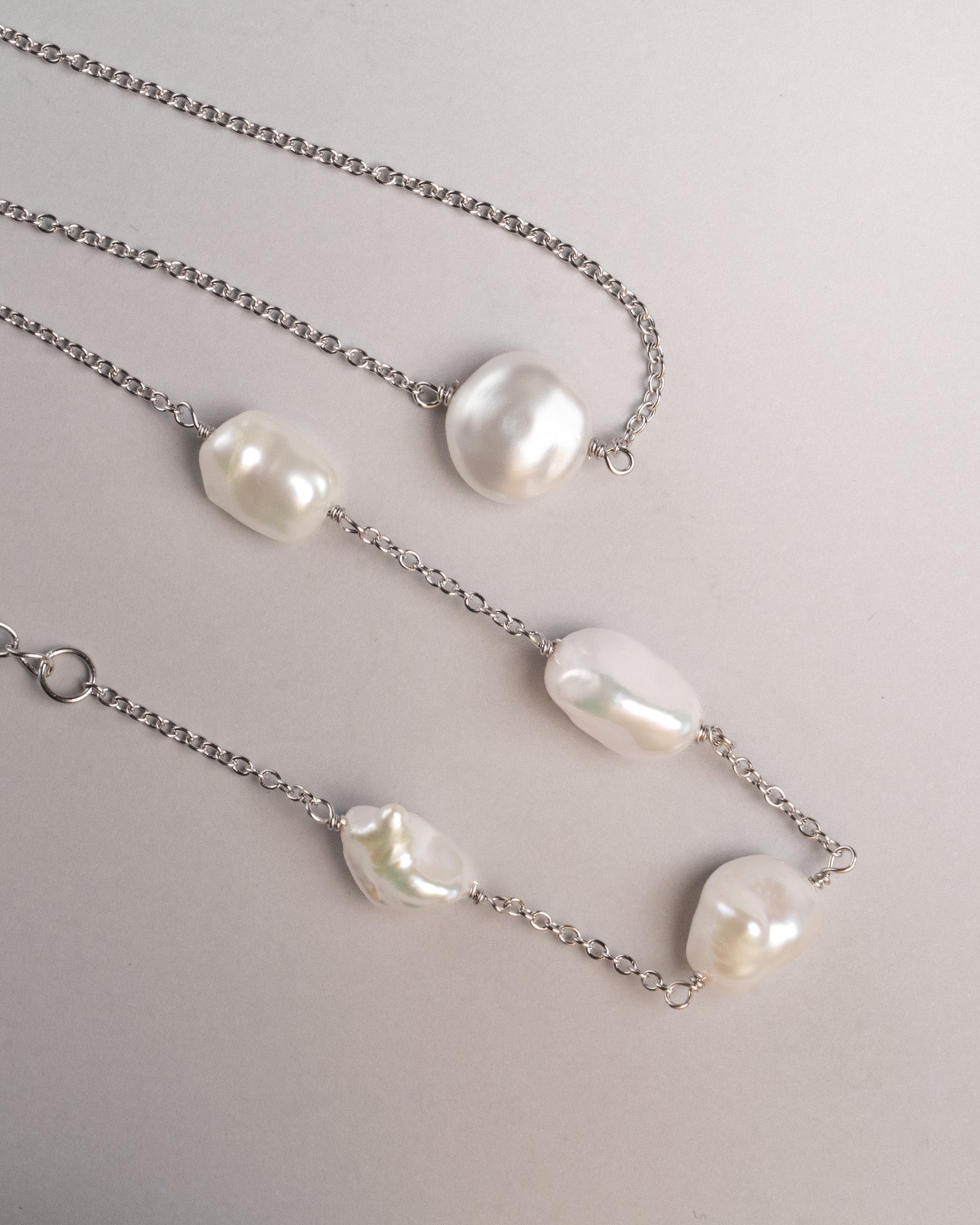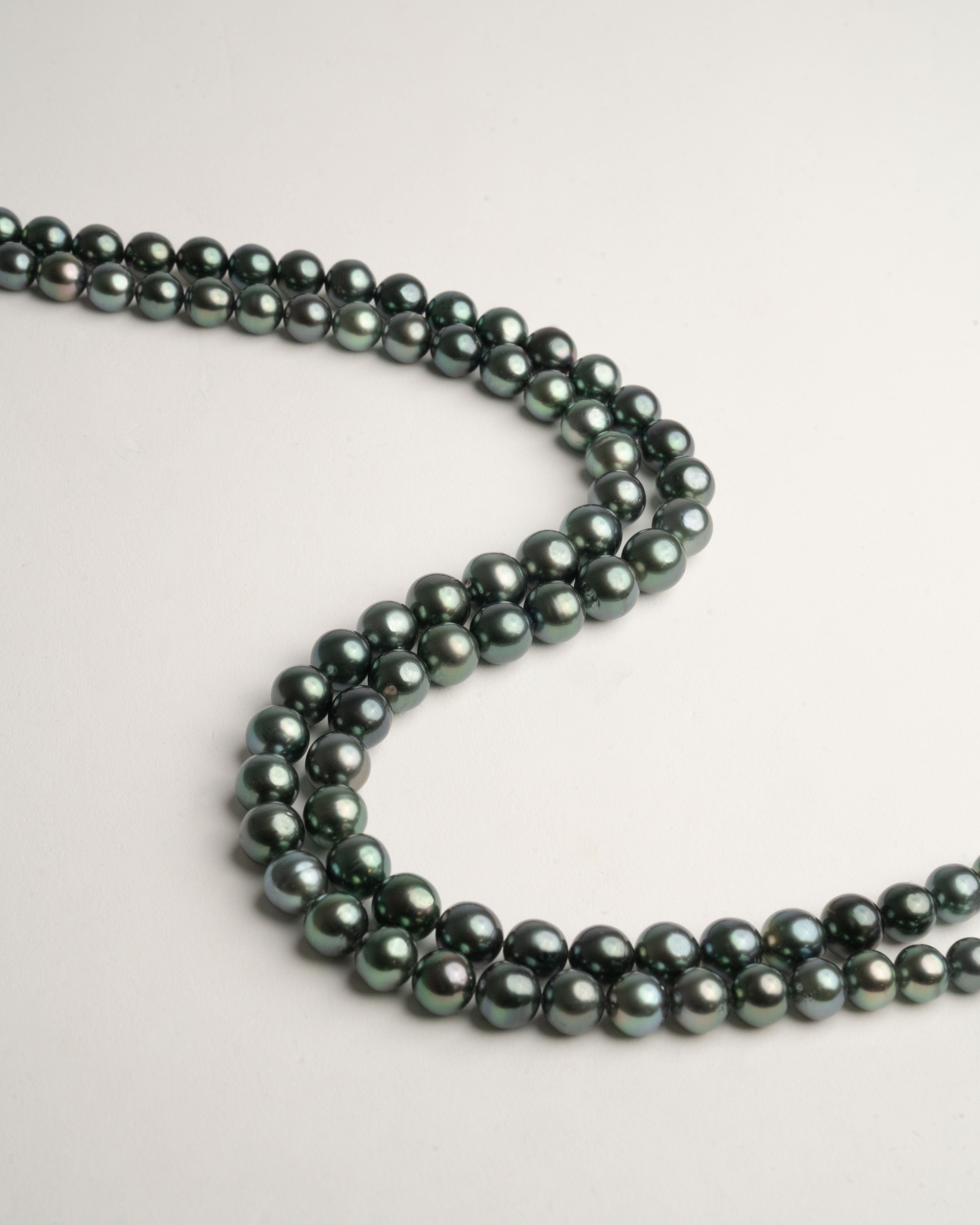Japanese Akoya Cultured Pearls
The classic pearl
The Japanese Akoya pearl it is the saltwater cultured pearl from the Akoya oyster, the Pinctada Fucata Martensii. The Akoya pearls were the first to begin being cultivated. The Akoya is considered the classic pearl with a almost perfect round shape, a very intense shine and neutral colors.

Akoya pearls from Japan are the ideal choice if you are looking for a classic pearl necklace, bracelet, or earrings. These are very elegant pearls that, due to their not-too-large size, can be worn both daily and at any event.
Until the late 1990s, Akoya pearls were the most popular pearls in the world. With the improvement in quality of Freshwater pearls and their more affordable price, these began to gain ground, but even today Akoya pearls are the ideal choice for anyone looking for more exclusive pearls with a unique luster.
A good Akoya pearl necklace is to jewelry what a good black handbag is to clothing: a staple that can be used in countless situations and never goes out of style.
Discover all our designs with Akoya pearls hereHow valuable are Akoya pearls?
Unlike the mussels that create Freshwater pearls, oysters from Akoya pearls they rarely produce more than two pearls per harvest. Oysters are included a round mother-of-pearl core and a small piece of tissue from the mantle of a donor oyster. This small nucleus is the reason why Akoya pearls are often so round. This shape, combined with the high luster of high-quality Akoya, and their relative scarcity compared to Freshwater pearls, give Akoya pearls a higher value.
Compared to the australian or the tahiti, Akoya pearls are the most affordable of these three saltwater pearls, due to the larger size and rarity of the first two. However, as we mentioned in this other article, the value not only depends on the origin, the quality of the pearls in question also matters, so this is merely indicative.
In SY Pearls, we only offer very high-quality Akoya pearls, personally selected by our pearl expert. Since Akoya pearls are, by nature, a more exclusive product, we believe it makes no sense to offer our customers lower-quality Akoya pearls, when they could instead purchase our Freshwater pearls, which are of excellent quality and price and surpass those lower-quality Akoya pearls in beauty.
Sizes, shapes, and colors

Pinctada Fucata Martensii, the Akoya pearl oyster from 1 month to 3 years old, with Akoya pearls
Where do Akoya pearls come from?
Akoya pearls are currently cultivated in Japan, China and, to a lesser extent, in Vietnam, Thailand, and Australia. The vast majority of Akoya pearls in the world are produced in Japan, which is the undisputed center of Akoya pearl production and that is why they are known as Japanese cultured pearls. China was once a true powerhouse, but Typhoon Paboo destroyed much of China's Akoya industry in 2007.

A bit of history of the Akoya Pearl
In 1908, he was granted the patent for the first and only method of cultivating round pearls in history.

Akoya pearl strand with its characteristic mirror-like luster.
In 1916, Mikimoto was already cultivating Akoya pearls in a standardized way, opening several farms in different locations.
The success of Mikimoto pearls was so great that they became a symbol of Japanese pride. However, outside of Japan, the world remained unaware of this discovery and continued to focus on the trade of natural pearls. The major natural pearl merchants did not like Mikimoto's discovery and even took him to court, arguing that it was an imitation since it was the result of human intervention. Nevertheless, the resistance was short-lived, and in 1926, at the first international jewelry congress, the term "cultured pearl" was recognized and adopted. Since then, all pearls produced with human intervention have been called by this name.
In 1938, Mikimoto already had stores worldwide and operated more than 350 farms that produced nearly 10 million pearls per harvest. The popularity of pearls kept growing, but one event shook the industry and the entire world: World War II.
After World War II, much of Mikimoto's industry was devastated and production dropped from nearly 10 million in 1938 to just 400,000 in 1946. However, the American forces occupying Japan began to show interest and requested that pearl production resume, with the condition that they be sold only to the American Central Supply Office. Many American soldiers returned to the United States with Akoya pearl necklaces, and the popularity of pearls began to grow again.
Mikimoto died in 1954 at the age of 96; according to him, his longevity was aided by swallowing a pearl a day for much of his old age.
After his death, the industry continued to develop, reaching more than 4,500 farms in Japan by 1961.
Since 1961 until today, the industry has undergone many changes and the popularity of other types of pearls, such as Freshwater pearls, has had an impact. Nevertheless, Akoya pearls remain the quintessential medium-sized round pearl.





